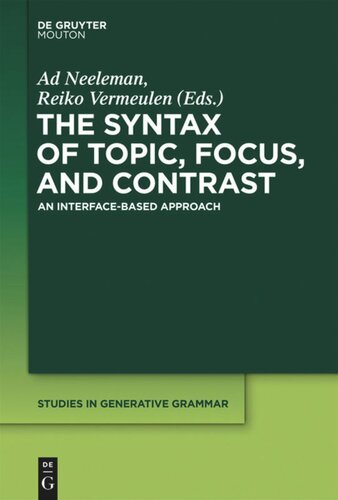

Most ebook files are in PDF format, so you can easily read them using various software such as Foxit Reader or directly on the Google Chrome browser.
Some ebook files are released by publishers in other formats such as .awz, .mobi, .epub, .fb2, etc. You may need to install specific software to read these formats on mobile/PC, such as Calibre.
Please read the tutorial at this link: https://ebookbell.com/faq
We offer FREE conversion to the popular formats you request; however, this may take some time. Therefore, right after payment, please email us, and we will try to provide the service as quickly as possible.
For some exceptional file formats or broken links (if any), please refrain from opening any disputes. Instead, email us first, and we will try to assist within a maximum of 6 hours.
EbookBell Team

4.1
80 reviews This book addresses how core notions of information structure (topic, focus and contrast) are expressed in syntax. The authors propose that the syntactic effects of information structure come about as a result of mapping rules that are flexible enough to allow topics and foci to be expressed in a variety of positions, but strict enough to capture certain cross-linguistic generalisations about their distribution. In particular, the papers argue that only contrastive topics and contrastive foci undergo movement and that this is because such movement has the function of marking the scope of contrast. Several predications are derived from this proposal: such as that a focus cannot move across a topic – whether the latter is in situ or not. Syntactic and semantic evidence in support of this proposal is presented from a wide range of languages (including Dutch, English, Japanese, Korean and Russian) and theoretical consequences explored. The first chapter not only outlines its theoretical aims, but also provides an introduction to information structure. As a consequence, the book is accessible to advanced students as well as professional linguists.